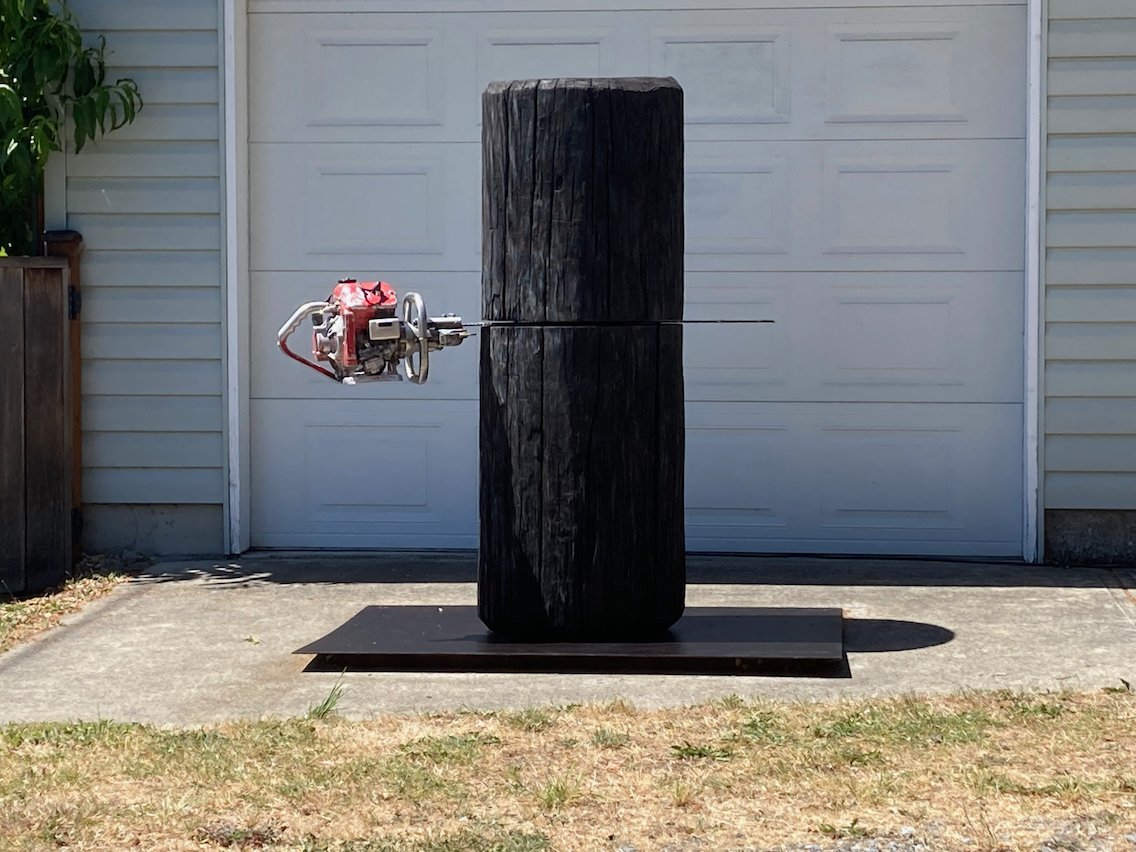Project for a Faller
Douglas fir log, chainsaw, electric motor
5.5' x 5' x 2'
2019
The traditional logging practices of the 19th and early 20th centuries, using double-bitted axes, crosscut saws and teams of oxen or horses, gave way after WWII to the expanded development of the gasoline-powered chainsaw. In the early 50s, the Industrial Engineering Limited (IEL) Pioneer was one of the first successful one-person chainsaws, developed in BC and manufactured in Burnaby. These brutally efficient machines and others like them contributed greatly to the rapid expansion of clear-cut logging practices in the province and elsewhere. Chainsaws also exacerbate the already-considerable hazards of working in the woods; the industry remains one of the most dangerous occupations in the country, with fallers particularly at risk.
Project for a Faller combines an original 1952 IEL chainsaw with a vertical log of Douglas fir; the saw is motorized to continuously revolve around a standing trunk, recalling the endless economy of resource harvest. Carbonization of the tree's surface suggests contemporary problems brought on through global heating: overproduction of atmospheric CO2, rampant wildfires and the degradation of carbon-capture capacity.
Video courtesy of Daniel Laskarin

Logging is one of BC's three major resource-extraction industries on which the wealth of the province has been built. It is also one of the most controversial and contentious, internationally condemned for continuing unsustainable clear-cut logging practices, making biodiversity recovery and remediation slow and difficult. The logging of stands of old-growth timber significantly reduces critical and essential carbon-storing capacities of BC forests which take generations to establish. salmon-spawning habitat is decimated from cutting-debris and extensive run-off into creeks and streams. Recent atmospheric rivers, brought on by climate degradation, have caused major washouts and landslides from clear-cut hillsides, causing widespread flooding and blocking major highways.
Douglas fir is one of the most valuable commercial tree species, due to its exceptional structural capacity; it is widely used in building and construction. Native Americans made extensive use of the wood, bark, needles and resin. Trees can grow over 100 meters high and 3 meters in diameter, often living 500 years, and even over 1000. Its thick bark resists wildfires, and the tree provides habitat for a multitude of birds, insects and mammals.
